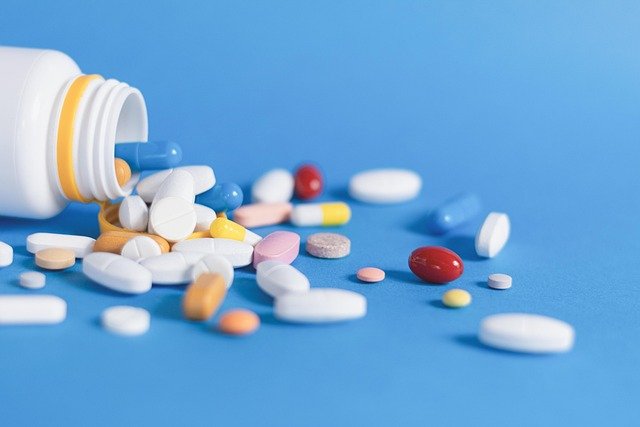Antibiotics have long been hailed as miracle drugs — and rightly so. From ear infections to strep throat, they’ve saved countless young lives. But while they battle bacteria, new research in 2025 is shining a spotlight on an unexpected side effect in children, especially toddlers: a higher risk of obesity. 😮
As a parent or caregiver, it’s essential to understand this evolving connection and what steps you can take to protect your child’s health today and in the future. Let’s unpack the facts.
📚 What’s New in 2025? The Toddler Gut & Obesity Connection
In recent years, researchers have turned their attention to the gut microbiome — the trillions of bacteria and microorganisms living in our digestive systems — and how they influence nearly every part of our health, including metabolism, weight, immunity, and even brain development.
🧬 New 2025 Findings:
A global pediatric study published in the Journal of Childhood Microbiota & Health revealed that:
- Toddlers who had 3 or more courses of antibiotics before age 2 were 29% more likely to be overweight by age 6.
- Broad-spectrum antibiotics (like amoxicillin-clavulanate) had a stronger link to weight gain.
- Children who didn’t receive probiotics or dietary fiber during antibiotic recovery had higher fat-to-muscle ratios later in childhood.
The conclusion? While antibiotics are still vital for treating infections, their impact on gut health during critical growth periods can have lasting metabolic consequences.
🦠 Why the Gut Microbiome Matters So Much
The gut microbiome is like a living, breathing ecosystem inside your toddler’s body. During the first few years of life, it’s especially sensitive and developing rapidly. When antibiotics are introduced, they can:
- Wipe out good bacteria that help digest food, regulate appetite, and produce important hormones.
- Disrupt how calories are extracted from food, leading to more fat storage.
- Affect the release of leptin and ghrelin, hormones that tell the brain when the body is full or hungry.
Think of it like this: A balanced gut helps your child process food efficiently. An unbalanced one may misfire, encouraging the body to store fat even when it’s not needed.
🤔 Common Illnesses That Don’t Always Require Antibiotics
Understanding when antibiotics are truly necessary is one of the best ways to reduce risk. Many common toddler illnesses are viral — and antibiotics don’t work on viruses. Examples include:
- The common cold
- Flu
- Most coughs
- Viral sore throats
- Mild ear infections
🩺 Always ask your pediatrician: “Is this a viral or bacterial infection?” If it’s viral, symptoms can often be managed with rest, hydration, and over-the-counter meds.
📉 The Long-Term Risks of Overprescribing Antibiotics in Early Childhood
Beyond obesity, overuse of antibiotics in toddlers can also lead to:
- Antibiotic resistance — where infections no longer respond to treatment
- Increased allergy and asthma risks
- Weakened immunity due to poor gut diversity
- Digestive issues such as constipation or diarrhea
- Mood and behavior changes (emerging links between gut and mental health)
✅ What Parents Can Do: Smart Strategies to Reduce Risk
You don’t need to fear antibiotics — just be proactive and informed. Here’s how:
🧠 1. Ask Questions Before Accepting a Prescription
- Is this a bacterial infection?
- Are there alternatives like watchful waiting?
- What are the short- and long-term side effects?
- Is this the narrowest effective antibiotic?
🥣 2. Support Gut Recovery After Antibiotic Use
- Give probiotic-rich foods: 🥛 yogurt (no added sugar), 🍵 kefir, or 🌱 fermented veggies.
- Feed gut-healing prebiotics: oats, bananas, sweet potatoes, garlic.
- Avoid sugary drinks and processed snacks that promote unhealthy bacteria.
🕰️ 3. Watch the Timing
- Antibiotic exposure before age 12 months is especially impactful.
- Try to delay unnecessary prescriptions during this window unless truly needed.
🏃 4. Promote a Healthy Lifestyle Year-Round
- Encourage daily outdoor play and physical activity.
- Build a meal plan focused on whole, nutrient-dense foods.
- Maintain a sleep schedule — poor sleep also affects weight regulation.
🧒 Real Parent Scenario
Meet Amaka, a mom in Lagos:
“My daughter had three rounds of antibiotics before her first birthday. By age 3, I noticed she was gaining weight quickly and always hungry. After speaking to a pediatric nutritionist, we added more high-fiber foods, stopped processed snacks, and began offering yogurt after antibiotics. She’s now 5, and her weight has stabilized!”
Real-life stories like Amaka’s remind us that change is possible with small, daily choices.
💬 Should Probiotics Always Be Given with Antibiotics?
While the 2025 global pediatric guideline recommends probiotics after any antibiotic course, especially for children under 3, it’s best to:
- Use a clinically tested brand for children (not all yogurts contain effective strains)
- Continue the probiotic for 1–2 weeks after the antibiotics
- Pair it with hydration and fiber for maximum benefit
⚠️ Check with your pediatrician before giving any supplements, especially if your child has allergies or gut issues.
🌍 Why This Matters Globally
Childhood obesity has tripled in the past 30 years, and early-life health decisions are playing a major role. By age 6, many kids are already on the path to future risks like:
- Type 2 diabetes
- High blood pressure
- Non-alcoholic fatty liver disease (NAFLD)
- Early puberty
Preventing antibiotic overuse could be a key piece of the global childhood obesity puzzle.
📌 Final Thoughts: Balance Is Everything
Antibiotics remain one of the most powerful tools in modern medicine. But just like nutrition, vaccines, and playtime, they must be used with intention.
✅ Use antibiotics only when necessary
✅ Support the gut with probiotic & fiber-rich foods
✅ Encourage daily movement and healthy habits
✅ Stay informed and ask questions during doctor visits
💬 Remember: You are your child’s best advocate. With awareness and action, you can safeguard not just their recovery — but their long-term health and happiness. 🌈💪






